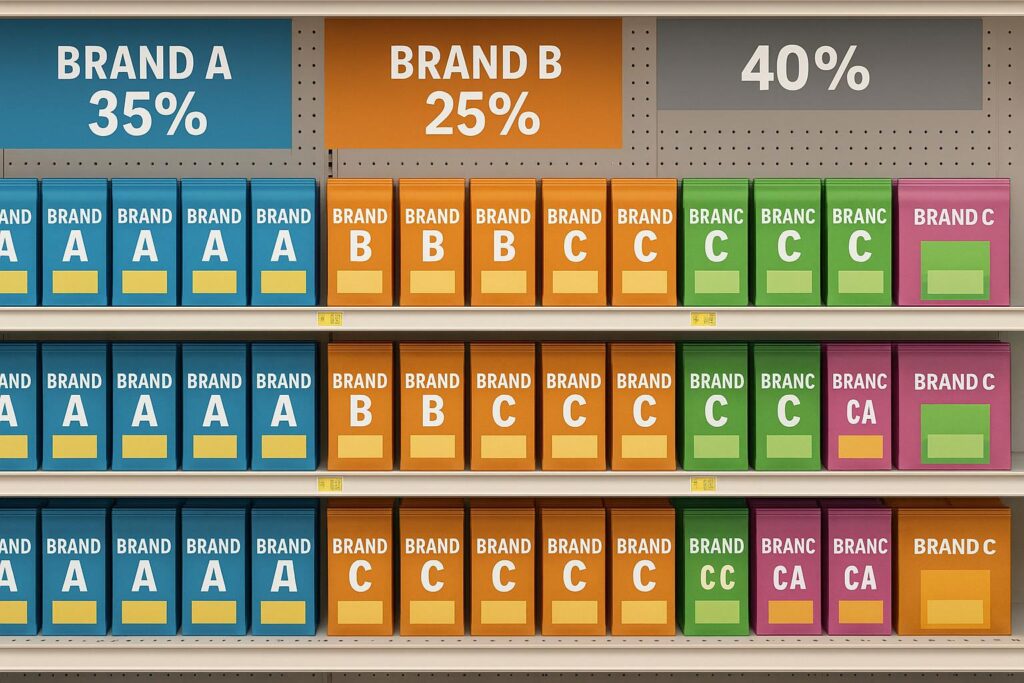10 KPIs I Always Track in Trade Marketing (And Why You Should Too)
When you’ve been in trade marketing long enough, you learn that good intentions and glossy plans mean nothing if you can’t measure your impact at the shelf.
Over the years — working with retailers, field teams, and distributors — I’ve come to rely on a few critical KPIs (Key Performance Indicators) that tell me whether my programs are actually moving the needle. These KPIs aren’t from textbooks — they’re battle-tested through real launches, real promotions, and sometimes, real painful lessons.
Here are the 10 KPIs I always make sure to track, and why they matter so much in real-world trade marketing.

1. Sales Volume by Channel and Account
Sales volume is the clearest indicator of success in trade marketing, but it must be dissected carefully. Each channel — whether modern trade, traditional trade, or e-commerce — operates with different dynamics, and needs to be assessed separately. Similarly, key accounts must be measured individually because their contribution to your overall business can vary significantly. Do not average numbers across channels; doing so masks underperformance that could seriously damage long-term growth.
If I’m running a promotion in modern trade, I want to see its direct impact there — not masked by other numbers. Similarly, if a key customer’s numbers are slowing, I can catch it early.

Real world tip:
Always dig deeper than just “sales growth.” Where is it happening? Which account? Which store type?
2. Promotional Uplift
If a promotion isn’t lifting sales above normal levels, it’s not working — simple as that. I always compare sales during the promotion versus the same period without promotion.
Real world tip:
Set a realistic baseline before starting. Promotions that simply “shift” regular sales without real growth are expensive mistakes.
3. Return on Trade Investment (ROTI)
Some promotions look great on the surface but bleed money when you do the math. I’ve made it a rule: before celebrating a successful-looking activation, I ask — what did it cost, and what did it return?
Real world tip:
Track both gross and net margins. A promotion that drives big volume but wipes out profit is still a loss.
4. Share of Shelf
Visibility wins battles. I’ve personally seen how increasing a brand’s share of shelf — even by 10% — can double sales in a month.
Real world tip:
Don’t just count facings. Look at placement — eye-level beats ankle-level any day.
5. Planogram Compliance
You can design the perfect shelf layout on paper — but if stores don’t follow it, it’s worthless. Every time we launch a new planogram, I make sure our team physically checks execution.
Real world tip:
Use photos. Nothing beats having actual before-and-after pictures for proof during retailer discussions.
6. New Product Distribution Rate
A big launch is exciting, but if the product isn’t available fast and wide, shoppers don’t even get a chance to buy it. I learned this the hard way after one product stalled because 30% of target stores didn’t stock it in time.
Real world tip:
Set “perfect store” targets upfront: where the product should be and by when. Follow up aggressively.
7. Weighted Distribution
It took me a few years to realize: being in 1,000 stores means nothing if they’re the wrong stores. Weighted distribution measures if you’re listed in the stores that matter — the ones moving volume.
Real world tip:
Focus your energy on top-selling outlets. One well-executed big store beats ten small ones any day.
8. Out-of-Stock Rate
There is nothing more frustrating than spending money on promotions and seeing empty shelves. Every out-of-stock situation is a lost sale and a dent in shopper trust.
Real world tip:
Monitor OOS closely, especially during promotions. Get field reports twice a week minimum during peak activities.
9. Retailer Satisfaction and Relationship Health
Numbers matter, but relationships matter too. I make it a point to informally check with my key accounts how they feel about our support, visibility programs, and promotions.
Real world tip:
Don’t wait for an annual survey. Have regular coffee meetings. Small feedback shared early can save major problems later.
10. Shopper Engagement at Retail
Today’s trade marketing is not just about selling — it’s about engaging. Whether it’s a QR code, a digital coupon, or a sampling station, I track how shoppers interact with our activations.
Real world tip:
Even simple tracking — like counting how many samples move or QR codes scanned — gives you powerful clues about shopper interest.
My Final Word: Measure What Truly Matters
Over the years, I’ve learned this truth: Trade marketing is where strategy meets execution.
You can have the best plans, the best brands, and the best products — but if you can’t measure the real-world impact at the store, you’re probably flying blind.
These 10 KPIs are the ones I check, whether I’m reviewing a launch, assessing a promotional calendar, or sitting across from a retailer discussing next quarter’s plans. I don’t track them because some manual said so. I track them because over the years I have learnt they tell me the real story. They show me whether shoppers are buying, whether retailers are backing us, and most importantly whether consumers relate to our
About the Author
Sudarshan Raman is a Business consultant and Coach with over two decades of experience across leading companies and brands like P&G, Bayer, BiC, Durex ,3M, and BAT. Known for his practical, real-world approach, Sudarshan bridges the gap between strategic planning and retail execution through his consulting and coaching.
Contact:
📧 hello@thestarquadrant.com
🌐 www.thestarquadrant.com
